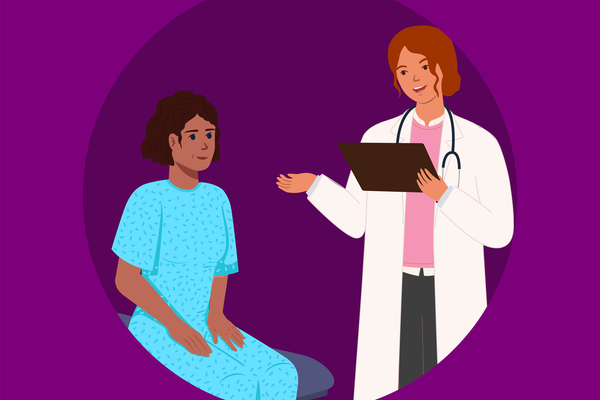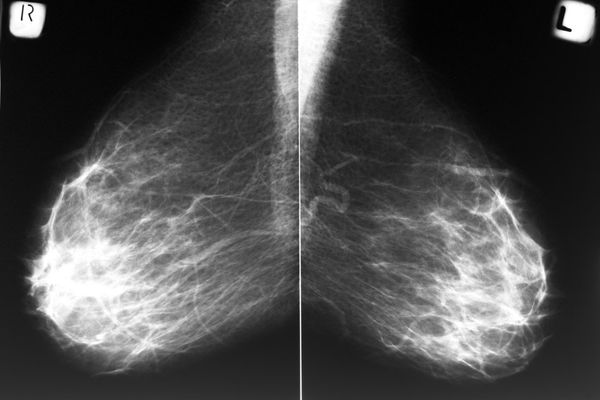Q:
What normal breast changes can I expect during my lifetime?
A:
Breasts undergo a series of normal changes throughout the life span. It is important to understand these basic stages of breast development and to know when to bring any abnormalities to your health care professional's attention.
By the time you are born, the nipple and the first stages of the milk duct system have already been formed. At puberty, the ovaries begin to produce and secrete estrogen, and fat within the breast connective tissue accumulates. This causes the breast to start growing and changing in appearance. The first things you will probably notice are raised nipples, darker color of the areola (skin surrounding the nipple) and some swelling of the breast itself. By the time you reach adulthood, your breasts will be fully grown.
After you begin menstruating (and ovulating), the breasts form secretory glands at the end of the milk ducts. As the breasts and duct system mature further, the secretory glands and lobules develop. During the menstrual cycle, as the levels of the hormones estrogen and progesterone change, your breasts may feel painful, tender, or they may swell due to temporary fluid retention. You may even feel a lump or two. If you are receiving hormone replacement therapy or are taking birth control pills, you may experience similar breast conditions.
During pregnancy, increasing levels of progesterone and estrogen cause several changes in the breast, all designed to prepare the breast for lactation and breastfeeding. The milk duct system is augmented by the formation of more lobules. Even early in pregnancy the areola becomes darker, and the breast increases in size and may be sore and tender. By the sixth month of pregnancy, the breasts are able to produce milk. Interestingly, it is hypothesized that the areola and nipple darken so it is easier for the baby to find it, since when they are young they can only distinguish light and dark. If you breastfeed after giving birth, you may develop a common infection called mastitis, which may be caused by a blocked milk duct. The symptoms are lumpiness, redness, tenderness, and warmth at the site. Usually, the condition clears up by taking antibiotics; more serious cases require the duct to be drained.
Most women, whether or not they have been pregnant or lactated, develop some type of breast condition during their life. Most of these changes are benign, but some may be malignant (breast cancer). The most common type of benign breast condition is fibrocystic change. Fibrocystic changes most often occur in women of childbearing age, but can develop at any age. Just prior to the beginning of the menstrual cycle, cysts can get larger and cause pain. If you have any of the following symptoms, contact your health care professional right away to determine the cause: lumpiness, tenderness, pain or nipple discharge. Other common benign breast conditions that should be attended to are benign tumors and breast inflammation.
Breast cancer affects approximately one in eight women during their lifetime with risk increasing with age. A suspicious lump, meaning one that is hard and irregular, can be detected by a mammogram or felt upon exam. Diagnosis can be confirmed by testing a tissue sample (biopsy) obtained either through a special needle or by surgical removal. Treatment depends on the stage of the cancer, and usually consists of surgery, chemotherapy and/or radiation therapy, and possibly hormonal therapy. Today 80 percent of women are good candidates for breast conservation surgery and 85 percent will be long-term survivors of the disease.
Menopause brings many hormonally related changes to the body, including breast changes. Lower hormone levels cause the breasts to have less glandular and more fatty tissue and for the connective breast tissue to become dehydrated and less supple. These changes can make the breast lose its once rounded shape and hang low or sag. Other common breast conditions are intraductal papilloma (wart-like growth inside the nipple) and mammary duct ectasia (swollen, clogged milk duct beneath the nipple); both of these conditions can happen at any age.
The best way to maintain breast health is to do monthly breast self-exams, have annual physical checkups that include a clinical breast exam and get regular mammograms (frequency depends on your age; ask your health care professional).






